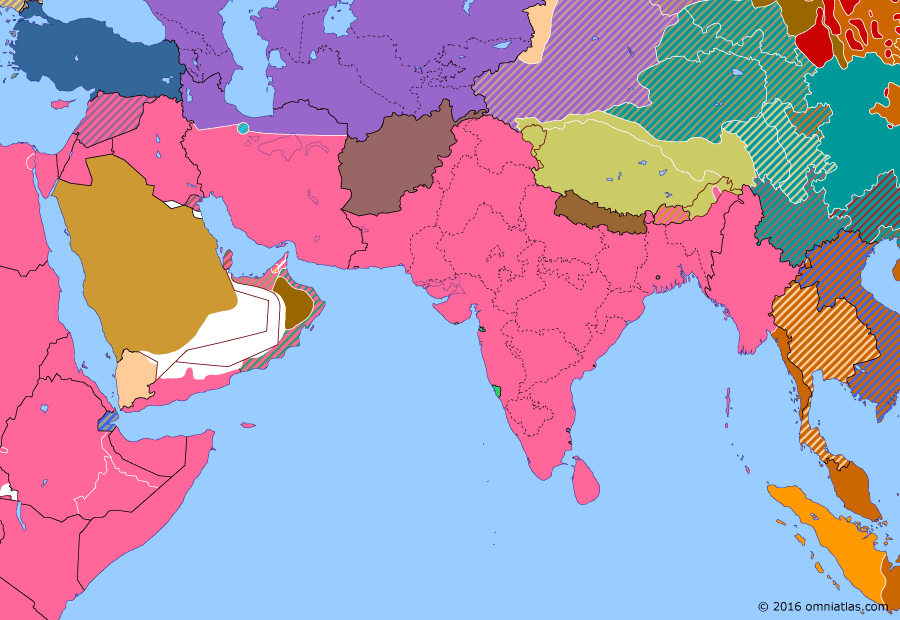Southern Asia 1942: Fall of Singapore
15 February 1942
15 Feb 1942
World War II: The South-East Asian Theater
1880–1914 Pax Britannica
1914–1917 Great War in the Middle East
1917–1918 Fall of the Ottoman Empire
1918–1923 Anglo-French Overreach
1923–1934 Rising Nationalism
1934–1940 Arrival of the New Order
1940–1941 World War II: The Middle Eastern Theater
1941–1945 World War II: The South-East Asian Theater
1945–pres Independence
Fall of Singapore
10 Dec 1941 Japanese invasion of Thailand and Malaya
15 Feb 1942 Fall of Singapore
5 Apr 1942 Indian Ocean Raid
6 Oct 1942 Quit India Movement
25 Mar 1943 Arakan, Chindits, and Bengal Famine
15 Apr 1944 Battle of Imphal-Kohima
20 Feb 1945 Operation Extended Capital
2 Aug 1945 Reconquest of Burma
12 Sep 1945 Japanese Surrender in South-East Asia
By February 1942 the Japanese forces invading Malaya had reached the perimeter of Singapore, Britain’s most important military base in Southeast Asia and the keystone of British defences in the region. Despite facing just 36,000 Japanese, the 85,000 troops in Singapore capitulated after only a week of fighting - a humiliating defeat and the largest surrender of British-led forces in history.
